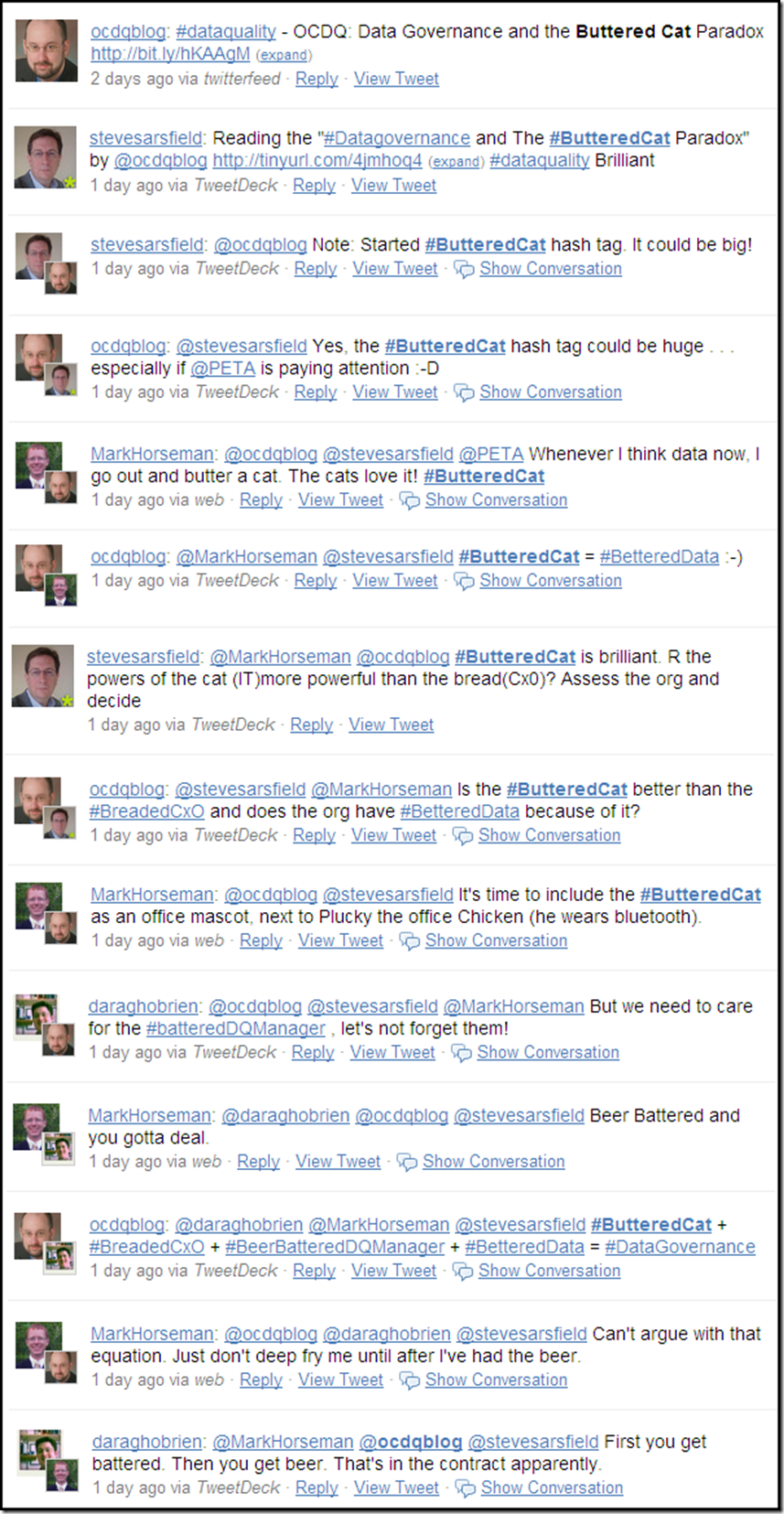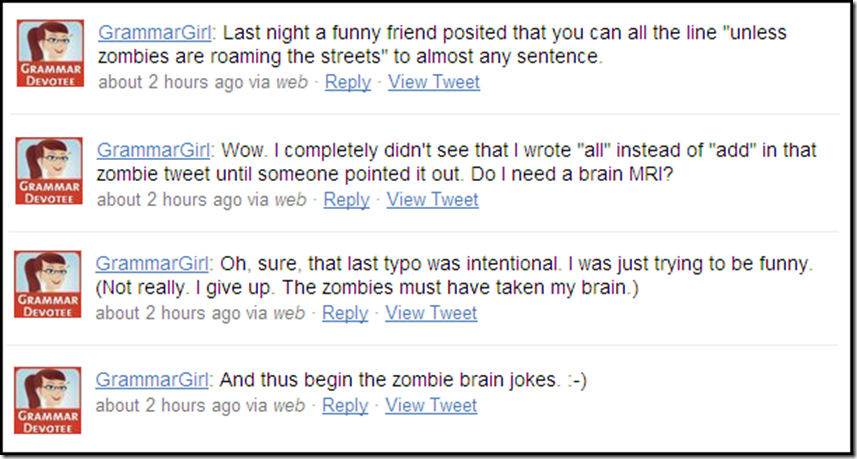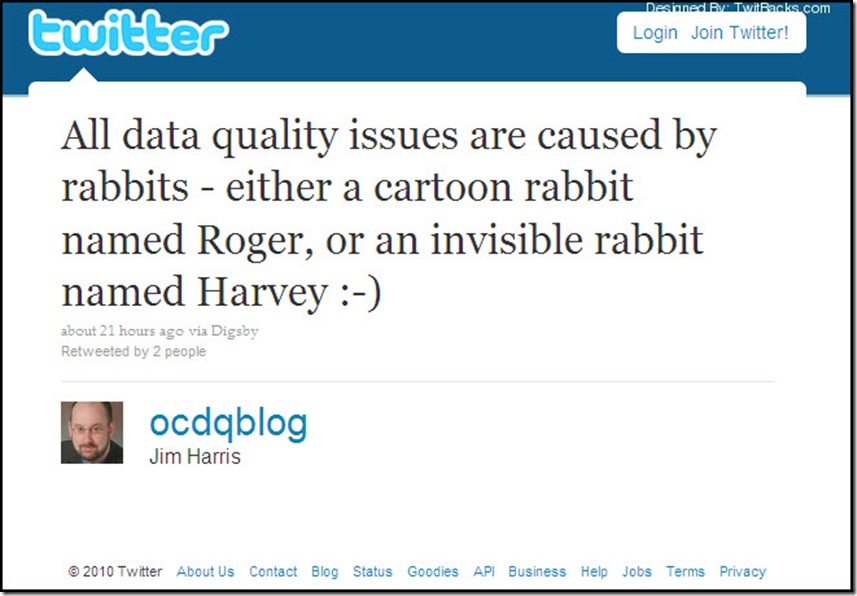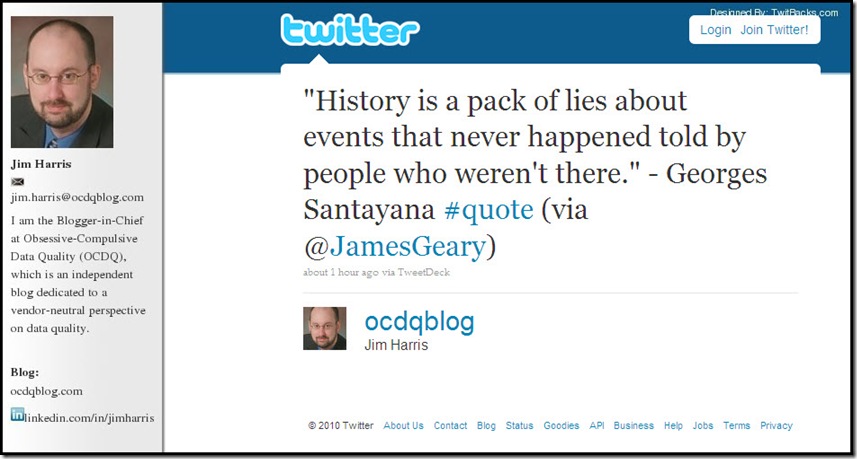Data Quality and #FollowFriday the 13th
/As Alice Hardy arrived at her desk at Crystal Lake Insurance, it seemed like a normal Friday morning. Her thoughts about her weekend camping trip were interrupted by an eerie sound emanating from one of the adjacent cubicles:
Da da da, ta ta ta. Da da da, ta ta ta.
“What’s that sound?” Alice wondered out loud.
“Sorry, am I typing too loud again?” responded Tommy Jarvis from another adjacent cubicle. “Can you come take a look at something for me?”
“Sure, I’ll be right over,” Alice replied as she quickly circumnavigated their cluster of cubicles, puzzled and unsettled to find the other desks unoccupied with their computers turned off, wondering, to herself this time, where did that eerie sound come from? Where are the other data counselors today?
“What’s up?” she casually asked upon entering Tommy’s cubicle, trying, as always, to conceal her discomfort about being alone in the office with the one colleague that always gave her the creeps. Visiting his cubicle required a constant vigilance in order to avoid making prolonged eye contact, not only with Tommy Jarvis, but also with the horrifying hockey mask hanging above his computer screen like some possessed demon spawn from a horror movie.
“I’m analyzing the Date of Death in the life insurance database,” Tommy explained. “And I’m receiving really strange results. First of all, there are no NULLs, which indicates all of our policyholders are dead, right? And if that wasn’t weird enough, there are only 12 unique values: January 13, 1978, February 13, 1981, March 13, 1987, April 13, 1990, May 13, 2011, June 13, 1997, July 13, 2001, August 13, 1971, September 13, 2002, October 13, 2006, November 13, 2009, and December 13, 1985.”
“That is strange,” said Alice. “All of our policyholders can’t be dead. And why is Date of Death always the 13th of the month?”
“It’s not just always the 13th of the month,” Tommy responded, almost cheerily. “It’s always a Friday the 13th.”
“Well,” Alice slowly, and nervously, replied. “I have a life insurance policy with Crystal Lake Insurance. Pull up my policy.”
After a few, quick, loud pounding keystrokes, Tommy ominously read aloud the results now displaying on his computer screen, just below the hockey mask that Alice could swear was staring at her. “Date of Death: May 13, 2011 . . . Wait, isn’t that today?”
Da da da, ta ta ta. Da da da, ta ta ta.
“Did you hear that?” asked Alice. “Hear what?” responded Tommy with a devilish grin.
“Never mind,” replied Alice quickly while trying to focus her attention on only the computer screen. “Are you sure you pulled up the right policy? I don’t recognize the name of the Primary Beneficiary . . . Who the hell is Jason Voorhees?”
“How the hell could you not know who Jason Voorhees is?” asked Tommy, with anger sharply crackling throughout his words. “Jason Voorhees is now rightfully the sole beneficiary of every life insurance policy ever issued by Crystal Lake Insurance.”
Da da da, ta ta ta. Da da da, ta ta ta.
“What? That’s impossible!” Alice screamed. “This has to be some kind of sick data quality joke.”
“It’s a data quality masterpiece!” Tommy retorted with rage. “I just finished implementing my data machete, er I mean, my data matching solution. From now on, Crystal Lake Insurance will never experience another data quality issue.”
“There’s just one last thing that I need to take care of.”
Da da da, ta ta ta. Da da da, ta ta ta.
“And what’s that?” Alice asked, smiling nervously while quickly backing away into the hallway—and preparing to run for her life.
Da da da, ta ta ta. Da da da, ta ta ta.
“Real-world alignment,” replied Tommy. Rising to his feet, he put on the hockey mask, and pulled an actual machete out of the bottom drawer of his desk. “Your Date of Death is entered as May 13, 2011. Therefore, I must ensure real-world alignment.”
Da da da, ta ta ta. Da da da, ta ta ta. Da da da, ta ta ta. Da da da, ta ta ta. Data Quality.
The End.
(Note — You can also listen to the OCDQ Radio Theater production of this DQ-Tale in the Scary Calendar Effects episode.)
#FollowFriday Recommendations
#FollowFriday is when Twitter users recommend other users you should follow, so here are some great tweeps who provide tweets mostly about Data Quality, Data Governance, Master Data Management, Business Intelligence, and Big Data Analytics:
(Please Note: This is by no means a comprehensive list, is listed in no particular order whatsoever, and no offense is intended to any of my tweeps not listed below. I hope that everyone has a great #FollowFriday and an even greater weekend.)
|
|































